A Basquaise is a flavorful stew or sauce accenting summer peppers and tomatoes usually served warm over grilled fish or meat. The Basquiase sauce originates from the Basque region of France near Spain and is similar to a piperade found in the famous ratatouille. At the Morningside Market, Executive Chef Gary Donlick of the Parisian eatery, Bistro Niko cooked this Swordfish Basquaise to showcase Burge Organic Farm’s sweet peppers and the juicy swordfish steaks arriving at the restaurant.
This rich Basquiase sauce also pairs well with polenta which happens to be Gary’s daughter and sous chef, Katelynn’s favorite thing to make at home. Knowing how important it is for children to learn how to cook and eat a healthy diet, Gary started teaching his daughter at an early age. At age 3, he showed her how to make pizza dough which has a similar feel to play-doh. Now at age nine, she can peel potatoes and make simple dishes. She cooks with her father 2 to 3 days a week.

At the market Kayelynn showed us how to make polenta while her father provided some useful tips. If you use fine grain polenta, it cooks in about 15 minutes where the coarse grain takes much longer. Use a 3 to 1 ratio of liquid to grain; you can always add more liquid toward the end to achieve the right consistency. Gary recommends chicken stock for the added flavor but you can use vegetable broth as well.
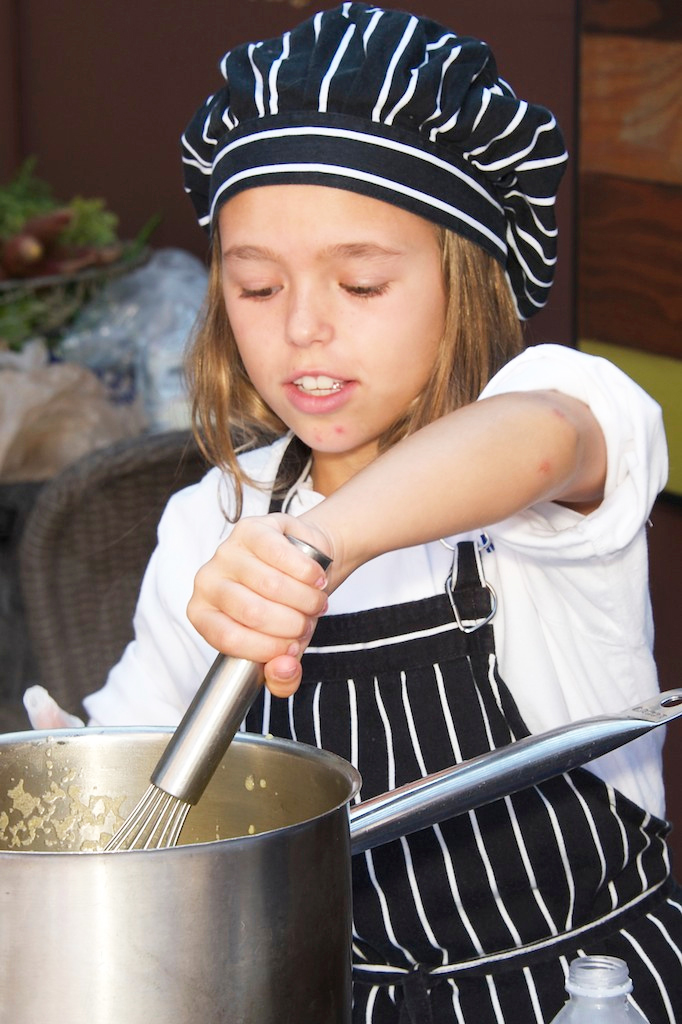
Now many of you may be wondering why he choose Swordfish since the fish has gotten a bad wrap for years. Honestly, I stopped eating swordfish for a while since I was having children and did not want the higher mercury levels to potentially affect their brain development. Now that I am out of child bearing years, I will eat it occasionally when it is fresh and in season. Now is the season to eat swordfish since the large adults are migrating from their breeding grounds in the Caribbean and eating their way up the coast getting nice and fat.
I am curious to see if you have limited consumption of certain fish and seafood due to concerns over higher mercury levels. Will you use swordfish for this recipe or substitute another fish? I know my vegetarian friends will double the polenta recipe and pour the basquaise sauce over the top. If there is any extra sauce, they will serve it over pasta or roasted vegetables like zucchini.
If you are pregnant or planning on getting pregnant or breast feeding, I would substitute another smaller fish with low mercury averages just to be safe. Here is a very old list but it will give you averages on mercury levels for fish and seafood in the Atlantic and Pacific oceans. Research shows the mercury level of fish and seafood can vary if harvested in the Mediterranean, Atlantic or Pacific Oceans.
Definitely cook with organically grown peppers and tomatoes to avoid the toxic pesticides. I highly recommend visiting your local market to find produce that is freshly picked to ensure you get the most nutrients and best flavor. The tomatoes this year are incredibly juicy and sweet; you will want to add them to all your dishes.
Directions
1) Marinade the Swordfish- Mix shallot, garlic, thyme with olive oil. Coat the swordfish with oil mix. Allow to marinate for 1 hour, refrigerated.
2) Make the Basquaise- Heat olive oil in pan. Add onions and sweat until tender over medium low heat. Add garlic, cook 1 minute, add peppers and cook until tender. Add ham, thyme and tomatoes and simmer for about 15 minutes. (Start the polenta during the simmer.) Add the red wine, cook until nicely thickened, about 10 minutes. Add parsley and season with cayenne pepper and salt to taste. Recommend Back to Organic Lemon Twist Himalayan Pink Salt.
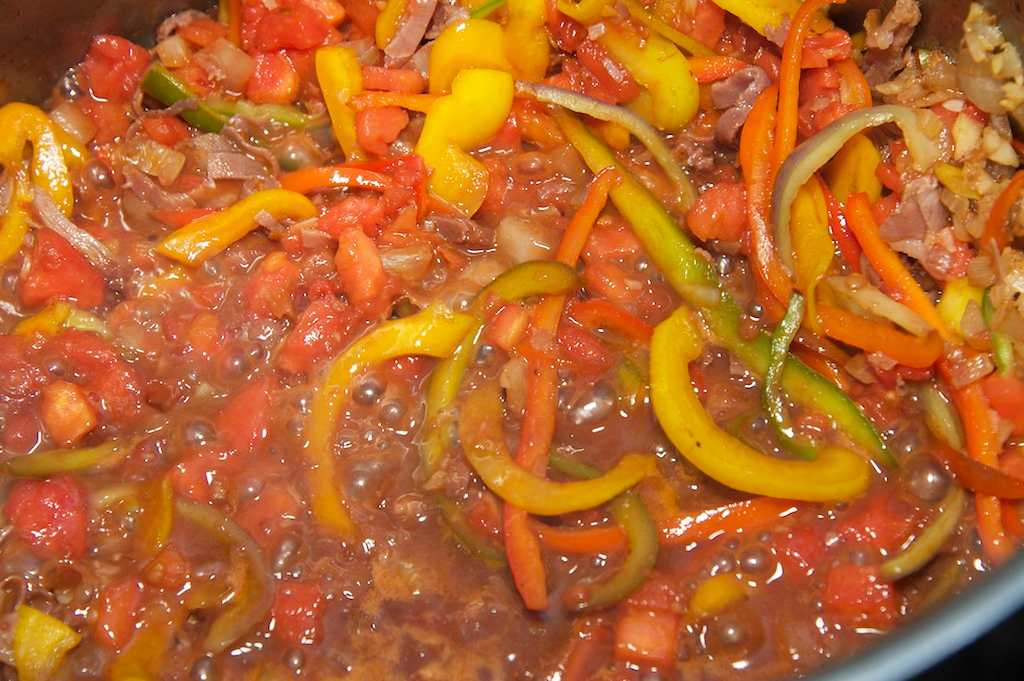
3) Cook the Polenta- Bring chicken stock to a boil. Whisk in polenta slowly over high heat and stir until thickened about 1 minute. Reduce heat to low and continue to cook for 4 to 5 minutes adding stock as needed to maintain proper consistency (similar to grits). Cook over low heat until the polenta is no longer grainy. Season with Back to Organic Lemon Twist Himalayan pink salt and white pepper and finish with butter.
4) Grill or Pan Sear the Swordfish- Cook on grill or sauté over medium heat for about 2 to 3 minutes per side. A thicker swordfish may take longer.
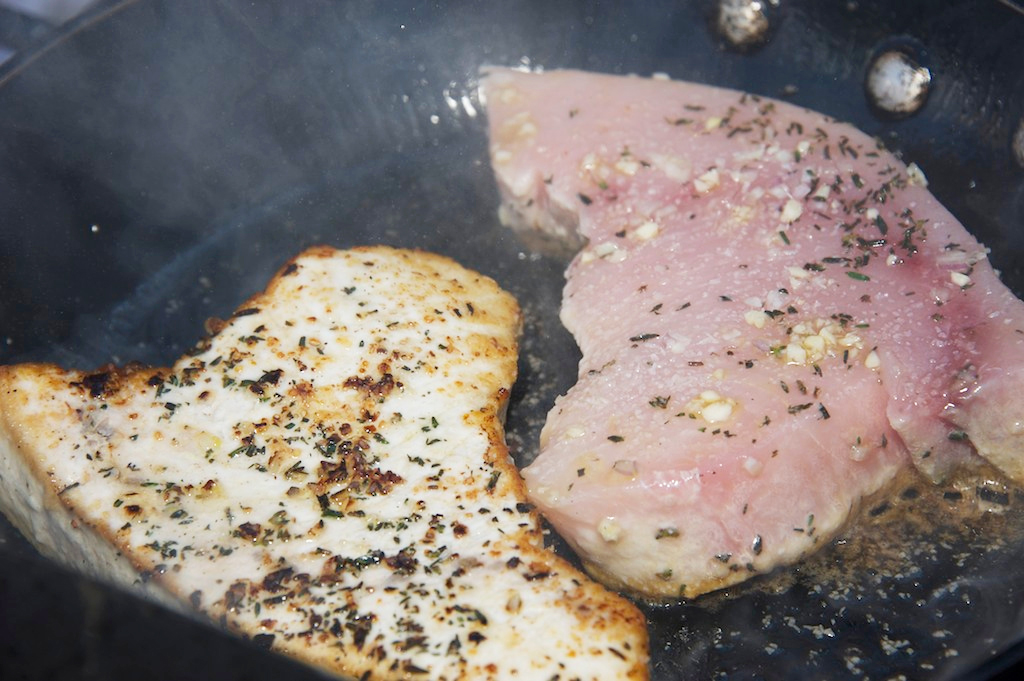
Chef Gary Tips: If there are water bubbles on the sides of the fish, it is medium rare. You can stick a paring knife in the middle and then place the knife under your lip on the chin to see if it is warm. You only want to warm the fish through so you do not overcook it.
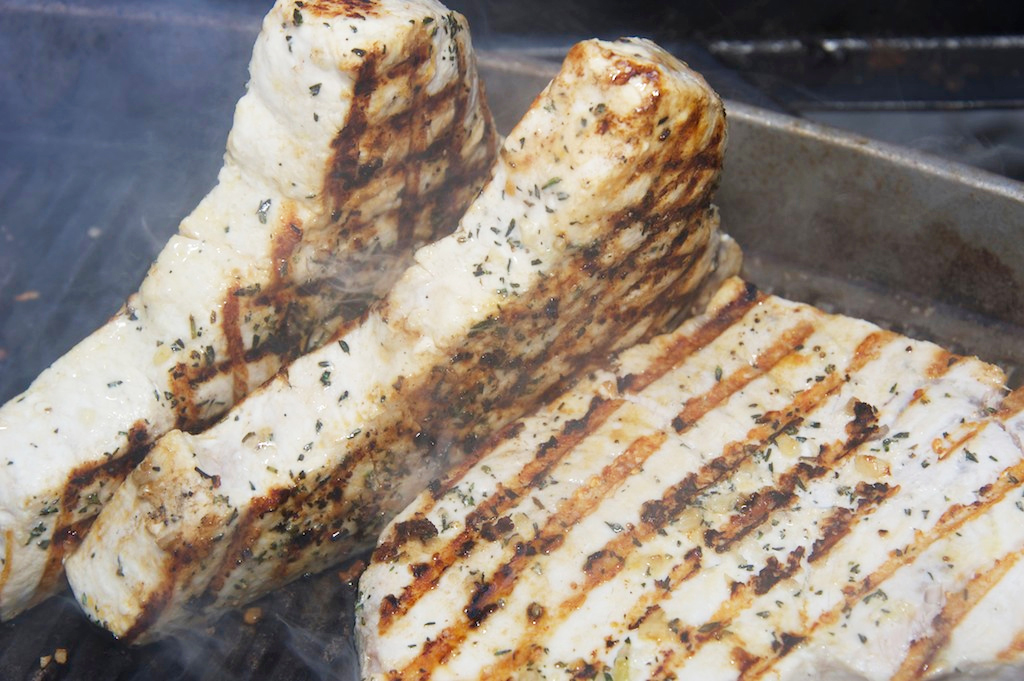
5) Plate- Place a dollop of polenta on a plate. Cut up the swordfish into strips and place two strips over the polenta. Spoon the Basquaise sauce over the swordfish. Serve warm. Enjoy!
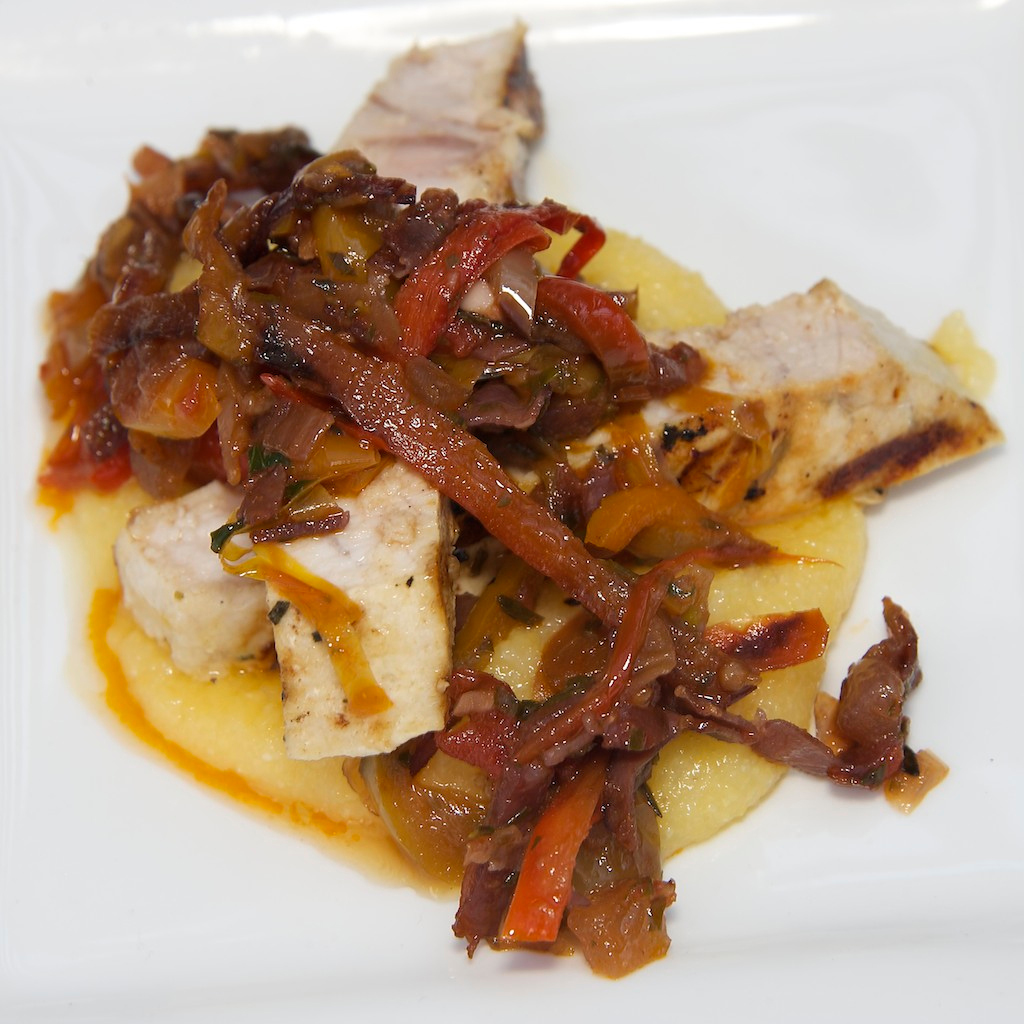
References:
Pictures taken at Morningside Market by TC Brodnax
Sweet organic, peppers provided by Burge Organic Farm
Recipe provided by Gary Donlick, Executive chef of Bistro Niko in Atlanta, GA
